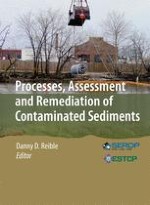2014 | OriginalPaper | Buchkapitel
5. Advances in Risk Assessment in Support of Sediment Risk Management
verfasst von : Charles Menzie, Susan Kane Driscoll, Michael Kierski, Ann Michelle Morrison
Erschienen in: Processes, Assessment and Remediation of Contaminated Sediments
Verlag: Springer New York
Aktivieren Sie unsere intelligente Suche, um passende Fachinhalte oder Patente zu finden.
Wählen Sie Textabschnitte aus um mit Künstlicher Intelligenz passenden Patente zu finden. powered by
Markieren Sie Textabschnitte, um KI-gestützt weitere passende Inhalte zu finden. powered by
